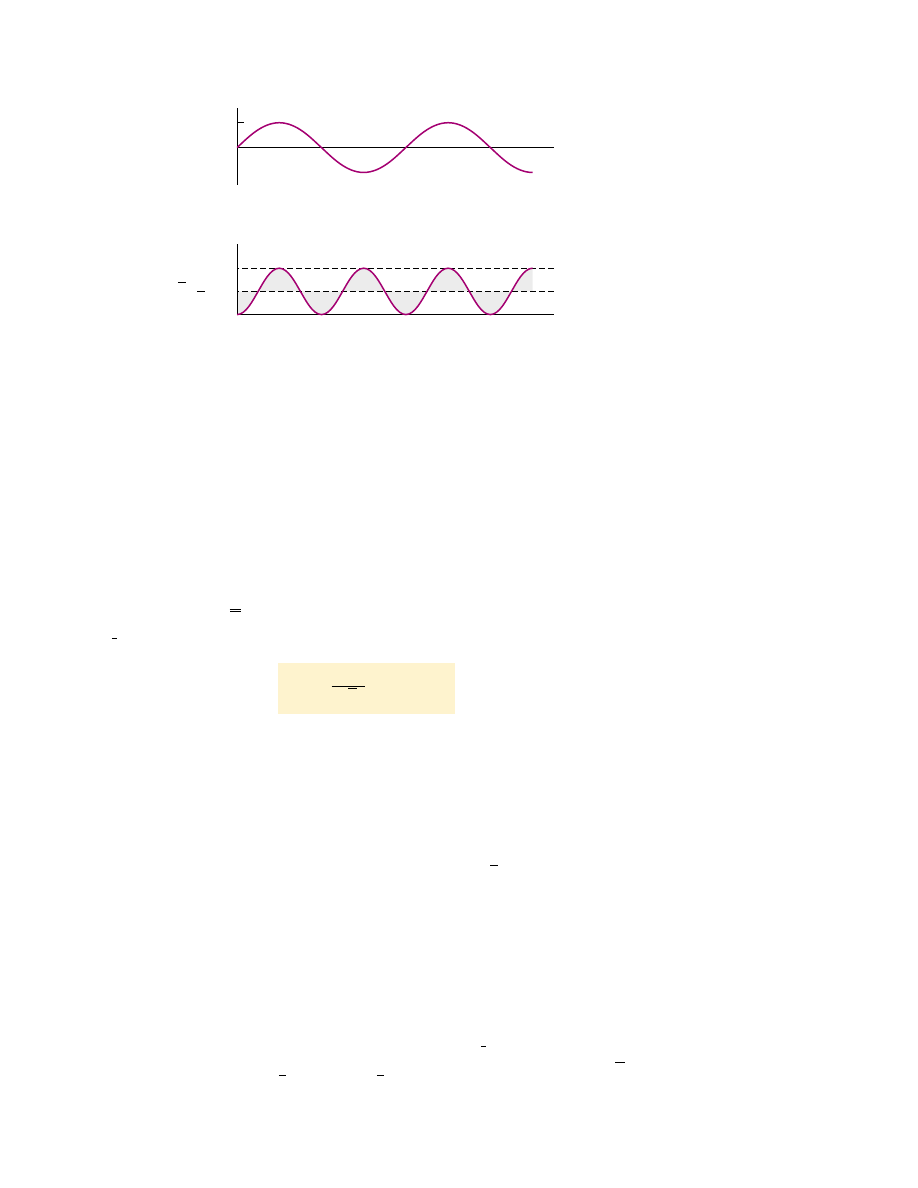Physics For Scientists And Engineers 6E - part 260

the resistor. Because this rate is proportional to the square of the current, it makes no
difference whether the current is direct or alternating—that is, whether the sign
associated with the current is positive or negative. However, the temperature increase
produced by an alternating current having a maximum value I
max
is not the same as
that produced by a direct current equal to I
max
. This is because the alternating current
is at this maximum value for only an instant during each cycle (Fig. 33.5a). What is of
importance in an AC circuit is an average value of current, referred to as the
rms
current. As we learned in Section 21.1, the notation rms stands for root-mean-square,
which in this case means the square root of the mean (average) value of the square of
the current:
. Because i
2
varies as sin
2
#
t and because the average value of i
2
is I
2
max
(see Fig. 33.5b), the rms current is
1
(33.4)
This equation states that an alternating current whose maximum value is 2.00 A
delivers to a resistor the same power as a direct current that has a value of
(0.707)(2.00 A) " 1.41 A. Thus, the average power delivered to a resistor that
carries an alternating current is
!
av
"
I
2
rms
R
I
rms
"
I
max
√
2
"
0.707I
max
1
2
I
rms
"
√
i
2
S E C T I O N 3 3 . 2 • Resistors in an AC Circuit
1037
Figure 33.5 (a) Graph of the current in a resistor as a function of time. (b) Graph of
the current squared in a resistor as a function of time. Notice that the gray shaded
regions under the curve and above the dashed line for I
2
max
/2 have the same area as the
gray shaded regions above the curve and below the dashed line for I
2
max
/2. Thus, the
average value of i
2
is I
2
max
/2.
1
That the square root of the average value of i
2
is equal to
can be shown as follows.
The current in the circuit varies with time according to the expression i " I
max
sin
#
t, so
i
2
"
I
2
max
sin
2
#
t. Therefore, we can find the average value of i
2
by calculating the average value
of sin
2
#
t. A graph of cos
2
#
t versus time is identical to a graph of sin
2
#
t versus time, except that
the points are shifted on the time axis. Thus, the time average of sin
2
#
t is equal to the time
average of cos
2
#
t when taken over one or more complete cycles. That is,
(sin
2
#
t)
av
"
(cos
2
#
t)
av
Using this fact and the trigonometric identity sin
2
&
$
cos
2
&
"
1, we obtain
(sin
2
#
t)
av
$
(cos
2
#
t)
av
"
2(sin
2
#
t)
av
"
1
(sin
2
#
t)
av
"
When we substitute this result in the expression i
2
"
I
2
max
sin
2
#
t, we obtain (i
2
)
av
"
"
I
2
rms
"
I
2
max
/2, or I
rms
"
I
max
/ . The factor
is valid only for sinusoidally varying currents.
Other waveforms, such as sawtooth variations, have different factors.
1/
√
2
√
2
i
2
1
2
I
max
/
√
2
I
max
I
2
i
2
I
2
1
2
t
t
(a)
(b)
i
=
i
2
max
max
0
0
rms current
Average power delivered to
a resistor